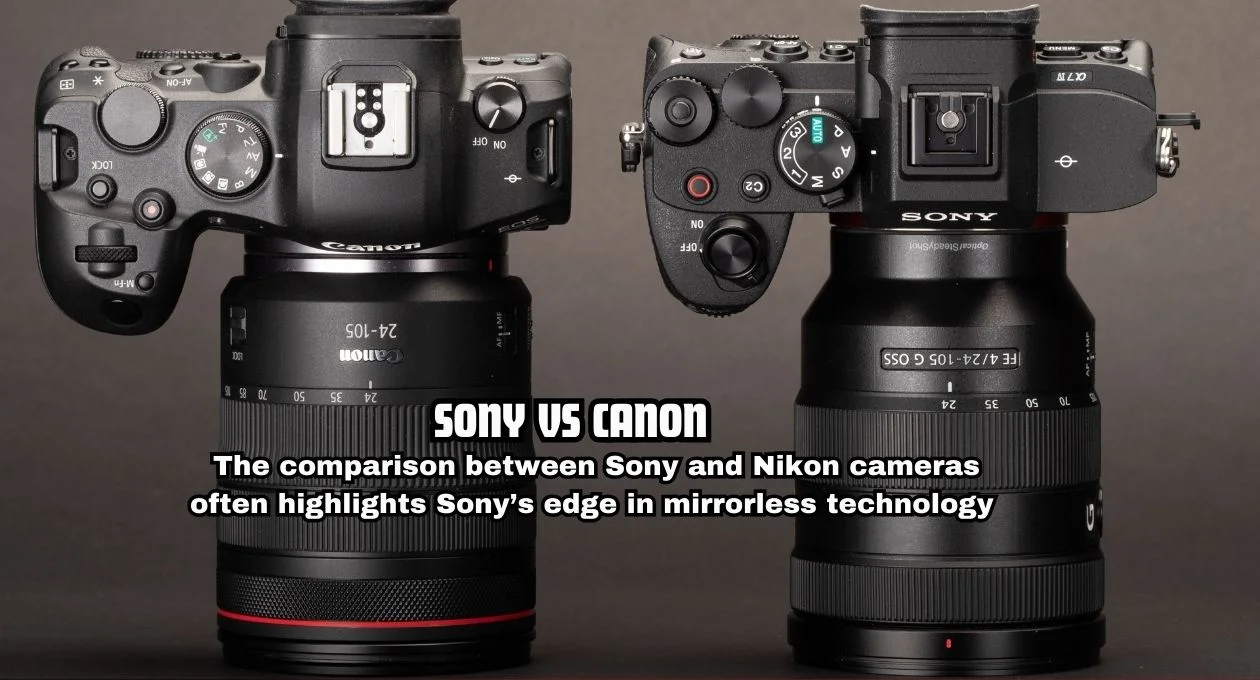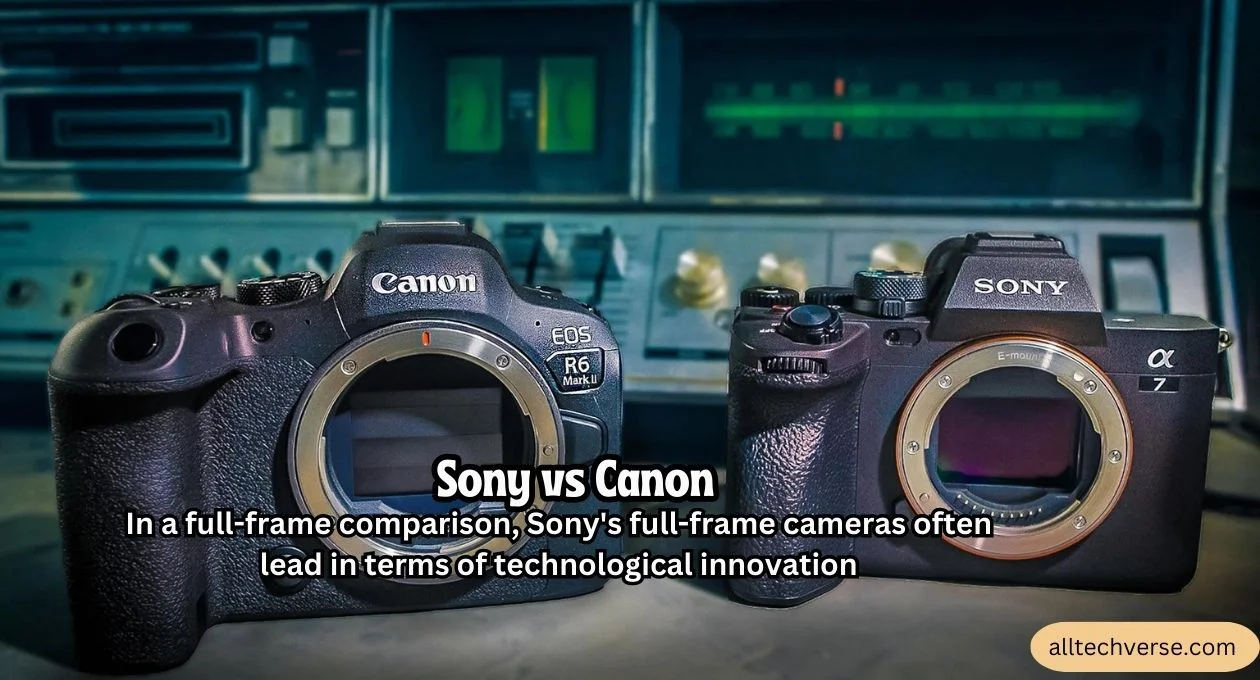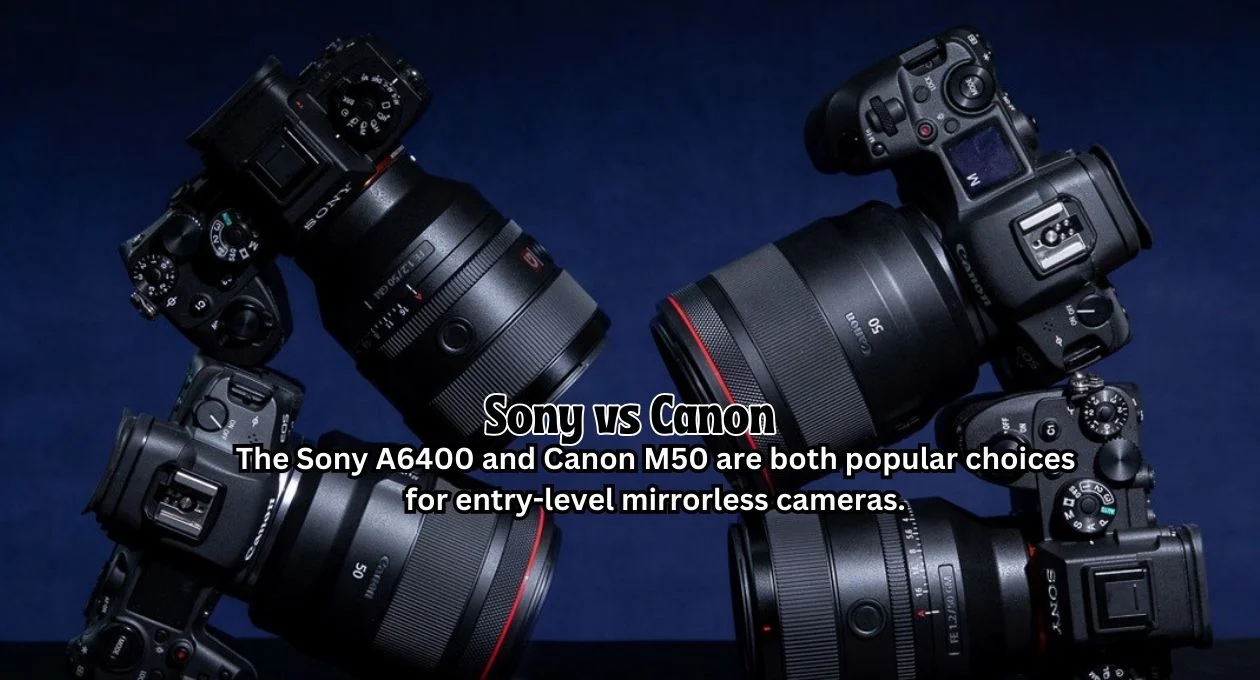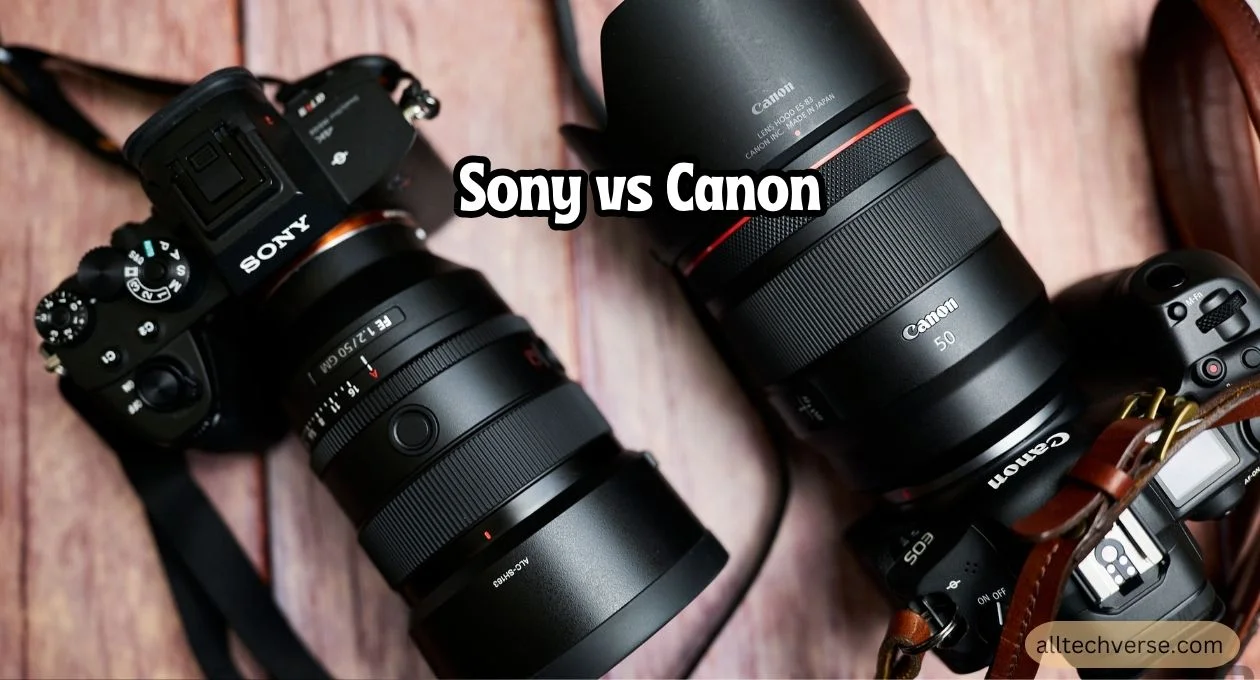Choosing the right camera can be a daunting task with so many options available on the market. sony vs canon are two of the most prominent brands, each offering a range of cameras that cater to different needs and preferences. In this comprehensive guide, we’ll explore the key aspects of Sony and Canon cameras to help you make an informed decision.
When comparing sony vs canon, one of the standout features of Sony cameras is their impressive autofocus technology. Many Sony models utilise fast hybrid autofocus systems that combine phase detection and contrast detection, allowing for quick and accurate focus on moving subjects. This makes Sony a popular choice for sports and wildlife photographers who need to capture fleeting moments with precision.
On the other hand, Canon is well-regarded for its colour science and image quality, particularly in skin tones, which can be a significant advantage for portrait photographers. Additionally, Canon’s extensive range of lenses and accessories offers users a high degree of flexibility and creativity in their photographic pursuits. This diversity allows photographers to tailor their gear to suit a wide range of shooting environments and styles.
Is Sony Better Than Canon?
The question of whether Sony is better than Canon doesn’t have a straightforward answer. Sony is renowned for its advanced autofocus systems and superior video capabilities, while Canon is praised for its color science and reliable image quality. Ultimately, the “better” choice will depend on what features you prioritize.
Another factor to consider is the build quality and design of the cameras. Sony tends to feature a more compact and lightweight design, especially in their mirrorless models, making them easier to carry during long shoots. On the other hand, Canon’s DSLRs and mirrorless options often have a more traditional feel, with tactile controls that many photographers appreciate. This can enhance usability, especially for those who have experience with older camera models.
Additionally, customer support and community engagement play important roles in the decision-making process. Canon boasts a vast library of resources, tutorials, and a dedicated user community that can be invaluable for beginners seeking guidance. Similarly, Sony has made strides in fostering a supportive community, offering workshops and online resources to help users get the most out of their equipment. As camera technology continually evolves, being part of an active community can significantly enhance the ownership experience.
Canon R6 vs Sony A7IV
The Canon R6 and Sony A7IV are both impressive full-frame mirrorless cameras. The Canon R6 is known for its excellent low-light performance and in-body image stabilization, making it a strong contender for both photography and video. The Sony A7IV, on the other hand, offers a higher resolution sensor and advanced autofocus features, which can be particularly appealing to those who need high-resolution images and fast focusing for dynamic subjects.
When evaluating the performance of the Canon R6 and Sony A7IV, it’s essential to consider how each camera handles diverse shooting conditions. The R6 excels in low-light environments, thanks to its impressive ISO range and effective noise reduction, making it an ideal choice for indoor events or night photography. Conversely, the A7IV’s higher megapixel count allows photographers to capture intricate details, which is particularly valuable in commercial and landscape photography.

Additionally, each camera offers unique video capabilities tailored to different creators. The Canon R6’s 4K recording with minimal crop provides a seamless filming experience, complemented by its Dual Pixel autofocus system that ensures sharp focus on subjects. On the flip side, the Sony A7IV supports various frame rates and 10-bit recording, which gives filmmakers greater flexibility in post-production, enhancing the overall quality of their projects.
Nikon or Sony Camera
When comparing Nikon and Sony cameras, each brand has its own advantages. Nikon is known for its robust build quality and excellent optical viewfinders, while Sony excels in innovation with its mirrorless systems and cutting-edge technology. Your choice between Nikon and Sony should consider factors such as system compatibility, lens availability, and personal preference for user interface.
The choice between Nikon and Sony also extends to their respective ecosystems, which can greatly influence your photographic journey. Nikon’s DSLR options provide a sense of tradition and familiarity, ideal for users who appreciate a more classic photographic experience. Meanwhile, Sony’s commitment to mirrorless technology offers the advantage of compactness and faster shooting speeds, catering to modern photographers who are always on the go.
Furthermore, both brands are continuously innovating, introducing new features and improvements to meet the evolving demands of photographers. Nikon’s latest models incorporate advanced autofocus systems and connectivity options, making them more appealing to a tech-savvy audience. On the other hand, Sony continues to push the boundaries with video capabilities and autofocus performance, drawing in enthusiasts who value versatility in their gear.
Sony vs Nikon Camera
The comparison between Sony and Nikon cameras often highlights Sony’s edge in mirrorless technology and video recording capabilities, while Nikon offers a more traditional DSLR experience with its well-established system of lenses and accessories. If you’re looking for a modern, tech-forward camera, Sony may have the upper hand. However, if you prefer the familiarity of a DSLR, Nikon could be the better choice.
Another important consideration when comparing camera brands is the accessibility of accessories and third-party options. Both Sony and Nikon have extensive ranges of lenses and attachments available, but the availability of specific gear can vary in your local market. Photographers often prefer brands that offer a wider selection of compatible accessories, as this can enhance their overall shooting experience and creativity.

Additionally, the investment in a camera system can significantly influence your choice. While some photographers may lean towards initial cost, others consider long-term value, which includes lens compatibility and resale potential. Both Sony and Nikon provide options tailored to different budgets, but understanding the full package—from body to lenses—can help make an informed decision aligning with your photographic aspirations.
Sony vs Canon Mirrorless
sony vs canon both offer robust mirrorless camera systems. Sony’s mirrorless cameras, like the A7 series, are known for their compact design, high-resolution sensors, and advanced autofocus systems. Canon’s mirrorless offerings, such as the EOS R series, often provide superior ergonomics and intuitive controls. Choosing between them will depend on your preference for these features.
When deciding between brands, it’s crucial to consider the user experience in terms of ergonomics and interface. Canon cameras are often praised for their user-friendly designs, making it easier for photography novices to ease into the craft. Users appreciate the tactile buttons and straightforward menus, which enhance the shooting experience, especially during fast-paced events. Similarly, Sony cameras have evolved to offer improved handling, but some users may still find the button layout a bit complex at first glance.
In addition to usability, the ecosystem of lenses and accessories is a key determinant in your choice. Canon’s extensive lineup of lenses caters to a wide range of photographic styles, from portraits to landscapes. Sony, while having a rapidly growing selection, may require users to explore third-party options for certain niche lenses. Therefore, evaluating the lens availability that aligns with your shooting preferences will greatly enhance your long-term satisfaction with the camera system you choose.
Sony vs Canon Full-Frame Comparison
In a full-frame comparison, Sony’s full-frame cameras often lead in terms of technological innovation, including higher resolution sensors and better video capabilities. Canon’s full-frame cameras, like the EOS R5 and R6, are praised for their color accuracy and overall image quality. Both brands offer excellent full-frame options, but your choice may depend on whether you value cutting-edge technology or more traditional image quality.
When considering the longevity of your investment in a camera system, it’s important to evaluate the anticipated growth of each brand. Sony’s continual advancements in mirrorless technology suggest that their cameras will likely remain relevant for years to come, appealing to both professionals and enthusiasts alike. Conversely, Nikon’s commitment to enhancing its DSLR offerings ensures that users of these cameras can continue to rely on a tried-and-true system that has a vast array of lenses and accessories available.

Additionally, the supportive communities surrounding each brand can greatly influence your decision. Both Sony and Nikon offer robust online platforms where photographers can share insights, tips, and troubleshooting advice. Engaging with these communities can enhance your photographic journey, providing not only resources and inspiration but also networking opportunities with fellow shooters who share your passion.
Sony A7 vs Canon R6
The Sony A7 series, including models like the A7III and A7IV, are known for their high-resolution sensors and advanced autofocus systems. The Canon R6, in comparison, offers impressive low-light performance and superior in-body stabilization. Both cameras are excellent choices, but if you need higher resolution and faster autofocus, the Sony A7 might be preferable. For those who prioritize stabilization and low-light performance, the Canon R6 could be the better option.
When considering your choice between Sony and Canon, it’s also vital to factor in their customer service and warranty offerings. Users often report varying experiences with technical support and repairs, which can play a significant role in your overall satisfaction with the brand. A reliable support system can provide peace of mind, especially when investing in high-end equipment that may require service or assistance over time.
Another aspect to keep in mind is the overall weight and size of the camera systems. For those who frequently travel or shoot on location, a lighter and more compact camera can make a substantial difference in comfort and convenience. Both Sony and Canon offer options that cater to different needs, so assessing how each brand’s design impacts your shooting style is essential in making an informed choice.
Sony A6400 vs Canon M50
The Sony A6400 and Canon M50 are both popular choices for entry-level mirrorless cameras. The A6400 is noted for its excellent autofocus system and 4K video capabilities, making it a strong contender for both photography and videography. The Canon M50 offers a user-friendly interface and good image quality, making it ideal for beginners. If advanced features and autofocus are important, the A6400 may have the edge. For a more intuitive user experience, the M50 could be the better choice.
When comparing the lenses available for both Sony and Canon systems, it’s crucial to identify your specific photographic needs. Lens selection can significantly influence your creative options, whether you’re interested in achieving stunning bokeh or capturing expansive landscapes. Sony’s growing lineup is particularly appealing for those who lean toward modern and versatile glass, while Canon’s established range offers trusted, high-quality choices for traditionalists.

While both brands offer cameras at various price points, additional costs for lenses, accessories, and potential future upgrades can accumulate. Assessing your overall budget ensures you invest wisely in a system that not only meets your immediate needs but also supports your long-term photography journey.
Sony vs Canon Image Quality
Both Sony and Canon offer excellent image quality, but they achieve it in different ways. Sony cameras often provide sharper images with higher resolution, thanks to their advanced sensor technology. Canon cameras are renowned for their pleasing color rendition and skin tones, which can be particularly advantageous for portrait photography. Your preference for image quality may depend on whether you favor sharp detail or accurate color reproduction.
When evaluating the video capabilities of Sony and Canon, both brands bring unique strengths to the table. Sony’s lineup is frequently highlighted for its superior video autofocus and advanced features such as S-log and HDR recording, making it a favourite among filmmakers. On the other hand, Canon’s reputation for excellent colour science and user-friendly video functions appeals to many content creators looking for dependable performance without the need for extensive post-processing.
It’s also worth noting the importance of firmware updates in extending the capabilities of camera systems. Sony tends to roll out updates that enhance features and improve performance over time, while Canon has made strides in this area with recent releases that expand functionalities. Staying informed about software developments can help you maximise the potential of your camera, ensuring you make the most out of your investment in either brand.
Sony vs Canon Autofocus
Sony is well-regarded for its superior autofocus systems, including features like Real-Time Eye Autofocus, which is particularly useful for capturing fast-moving subjects. Canon also offers strong autofocus capabilities, particularly with its Dual Pixel AF system, which provides smooth and accurate focusing in both stills and video. The choice between Sony and Canon autofocus systems will depend on your specific needs, such as speed, accuracy, and tracking capabilities.
In addition to the technical specifications, user experience plays a crucial role when choosing between Sony and Canon. Ergonomics, button layout, and menu navigation can significantly affect your shooting experience, especially during long sessions. Those who prioritise a comfortable grip and intuitive controls may find one brand more appealing than the other. It’s advisable to physically handle both systems at a store to determine which feels more natural in your hands.
Another consideration is the future of camera technology and how each brand adapts to changing trends. With the rise of hybrid shooting — combining photography and videography — brands are increasingly prioritising features that cater to both disciplines. Staying updated on upcoming models and innovations can help ensure your investment supports your evolving creative pursuits. Exploring user reviews and community feedback can also provide insight into how well each brand meets the needs of its user base.
Sony vs Canon for Photography
When choosing between Sony and Canon for photography, consider what aspects are most important to you. Sony’s cameras are known for their high resolution, advanced autofocus, and innovative features. Canon cameras, on the other hand, offer excellent color science, reliable performance, and user-friendly controls. Your decision may come down to which brand aligns better with your photography style and preferences.
Another key factor to consider is the availability of accessories and support for each brand. Both Sony and Canon have a wide range of compatible accessories, from lenses and flashes to grips and battery packs. Ensuring that the ecosystem surrounding your camera system meets your needs can enhance your shooting experience and expand your creative possibilities. Additionally, accessing customer support and service centres is essential for troubleshooting and maintenance, which can be beneficial as you delve deeper into your photography journey.
Finally, think about the community and resources each brand offers. Both Sony and Canon have active user communities, providing platforms for sharing tips, advice, and inspiration. Engaging with fellow photographers can enhance your learning curve and foster connections that encourage your growth. Online tutorials, workshops, and forums dedicated to each brand can also support your skill development, making it easier to explore different styles and techniques.
FAQs
Q: Which brand is better for beginners, Sony or Canon?
A: Canon is often recommended for beginners due to its user-friendly interfaces and intuitive controls. However, Sony’s offerings also feature simplified settings that can accommodate newcomers while providing room to grow as skills advance.
Q: Do I need to invest in expensive lenses for good photography?
A: While high-quality lenses can significantly enhance image quality and creative options, there are many affordable lenses available for both brands that still offer excellent performance. It’s essential to choose lenses that align with your specific photography needs.
Q: How important is video quality in a camera?
A: If you intend to shoot video along with photography, video quality becomes a crucial consideration. Both Sony and Canon offer excellent video capabilities, with Sony often excelling in advanced features for filmmakers. Assess your video needs to determine which brand suits you better.
Q: Can I use lenses from one brand on the other?
A: Generally, lenses are not cross-compatible between brands due to differing mount systems. However, there are third-party adapters that allow for some compatibility, but they may affect performance and functionality. It’s best to invest in lenses specific to your chosen camera system.

Conclusion
Both Sony and Canon offer exceptional cameras with distinct advantages. Sony excels in innovation, video capabilities, and advanced autofocus, while Canon is celebrated for its color accuracy, ergonomic design, and user-friendly interface. By considering your specific needs and preferences—whether for photography, video, or a combination of both—you can make a more informed decision and choose the camera that best fits your requirements.
Ultimately, the decision between Sony and Canon will come down to personal preference and specific use cases. Both brands have cultivated their strengths that cater to different styles and genres of photography and videography. It’s essential to evaluate how each system aligns with your creative vision, as well as the types of projects you intend to undertake. Taking the time to experiment with both systems can lead to a choice that feels right for you.
For More Information AllTechVerse.



